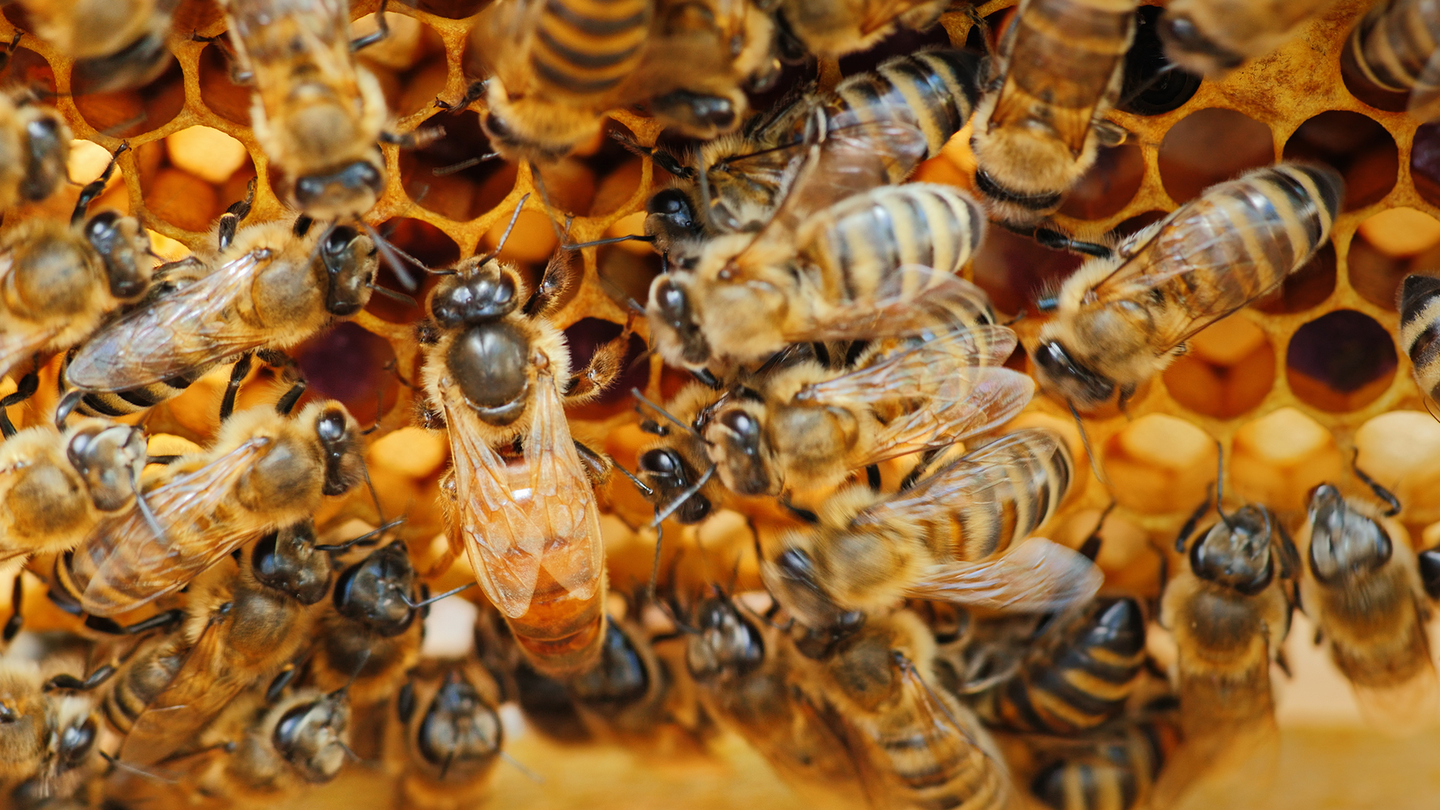Female honeybees may pass down ‘altruistic’ genes
Honeybee genes might make workers serve the queen above themselves.

Honeybees are a model of teamwork in nature, with their complex society and hives that generate enough energy to create an electrical charge. They also appear to be some of the rare animals that display a unique trait of altruism, which is genetically inherited. The findings were described in a study published September 25 in the journal Molecular Ecology.
[Related: Bee brains could teach robots to make split-second decisions.]
Giving it all for the queen bee
According to the American Psychological Association, humans display altruism through behaviors that benefit another individual at a cost to oneself. Some psychologists consider it a uniquely human trait and studying it in animals requires a different framework for understanding. Animals experience a different level of cognition, so what drives humans to be altruistic might be different than what influences animals like honeybees to act in ways that appear to be altruistic.
In this new study, the researchers first looked at the genetics behind retinue behavior in worker honeybees. Retinue behavior is the actions of worker bees taking care of the queen, like feeding or grooming her. It’s believed to be triggered by specific pheromones and worker bees are always female.
After the worker bees are exposed to the queen’s mandibular pheromone (QMP), they deactivate their own ovaries. They then help spread the QMP around to the other worker bees and they only take care of the eggs that the queen bee produces. Entomologists consider this behavior ‘altruistic’ because it benefits the queen’s ability to produce offspring, while the worker bees remain sterile.
The queen is also typically the mother of all or mostly all of the honeybees in the hive. The genes that make worker bees more receptive to the queen’s pheromone and retinue behavior can be passed down from either female or male parent. However, the genes only result in altruistic behavior when they are passed down from the female bee parent.
“People often think about different phenotypes being the result of differences in gene sequences or the environment. But what this study shows is it’s not just differences in the gene itself—it’s which parent the gene is inherited from,” study co-author and Penn State University doctoral candidate Sean Bresnahan said in a statement. “By the very nature of the insect getting the gene from its mom, regardless of what the gene sequence is, it’s possibly going to behave differently than the copy of the gene from the dad.”
A battle of genetics
The study supports a theory called the Kinship Theory of Intragenomic Conflict. It suggests that a mothers’ and fathers’ genes are in a conflict over what behaviors to support and not support. Previous studies have shown that genes from males can support selfish behavior in mammals, plants, and honeybees. This new study is the first known research that shows females can pass altruistic behavior onto their offspring in their genes.
[Really: What busy bees’ brains can teach us about human evolution.]
Worker bees generally have the same mother but different fathers, since the queen mates with multiple male bees. This means that the worker bees share more of their mother’s genes with each other.
“This is why the Kinship Theory of Intragenomic Conflict predicts that genes inherited from the mother will support altruistic behavior in honeybees,” Breshnahan said. “A worker bee benefits more from helping, rather than competing with, her mother and sisters—who carry more copies of the worker’s genes than she could ever reproduce on her own. In contrast, in species where the female mates only once, it is instead the father’s genes that are predicted to support altruistic behavior.”
Pinpointing conflict networks
To look closer, the team crossbred six different lineages of honeybees. Bresnahan says that this is relatively easy to do in mammals or plants, but more difficult in insects. They used honeybee breeding expertise from co-author Juliana Rangel from Texas A&M University and Robyn Underwood at Penn State Extension to create these populations.
Once the bee populations were successfully crossed and the offspring were old enough, the team assessed the worker bees’ responsiveness to the pheromone that triggers the retinue behavior.
“So, we could develop personalized genomes for the parents, and then map back the workers’ gene expression to each parent and find out which parent’s copy of that gene is being expressed,” Bresnahan said.
The team identified the gene regulatory networks that have this intragenomic conflict, finding that more genes that have a parental bias were expressed. These networks consisted of genes that previous research showed were related to the retinue behavior.
“Observing intragenomic conflict is very difficult, and so there are very few studies examining the role it plays in creating variation in behavior and other traits,” study co-author and Penn State entomologist Christina Grozinger said in a statement. “The fact that this is the third behavior where we have found evidence that intragenomic conflict contributes to variation in honeybees suggests that intragenomic conflict might shape many types of traits in bees and other species.”
The team hopes that this research will help provide a blueprint for more studies into intragenomic conflict in other animals and plants.